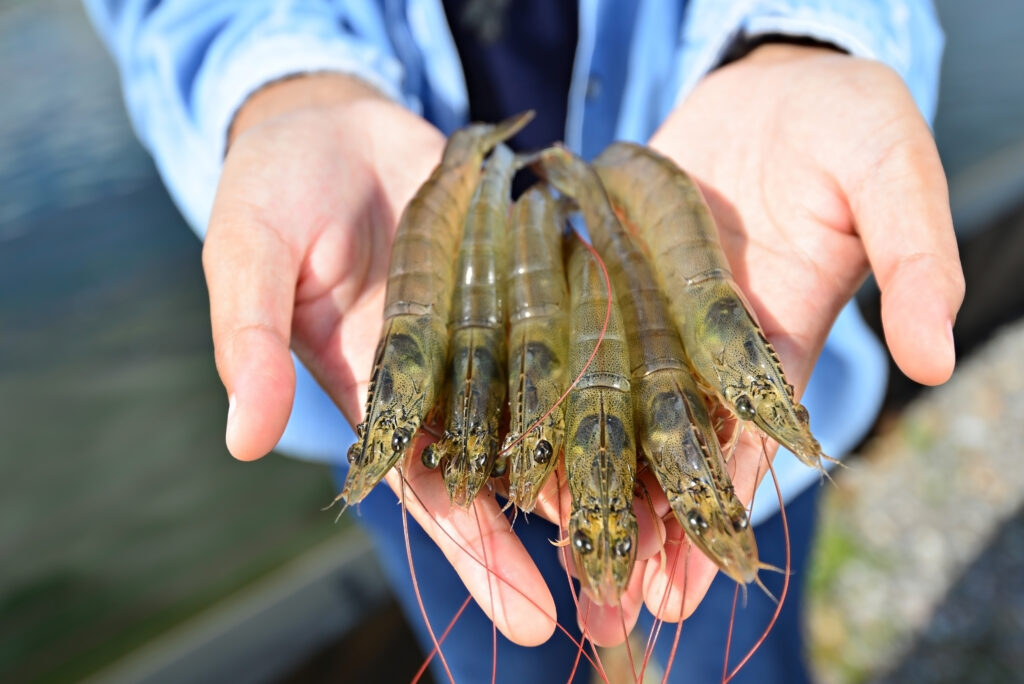ASC consults on Farm Standard revisions

Water quality control, fish slaughter practices and welfare for shrimp broodstocks are among the issues in proposed changes to the Aquaculture Stewardship Council’s Farm Standard.
The ASC is consulting on two aspects of the Farm Standard – Water Quality and Fish Health and Welfare – as well as a new module for the Freshwater Trout Standard, covering pike and perch.
The consultation runs between 1 March and 30 April 2023 and details can be found on the ASC website’s Alignment; ASC Farm Standard page.
Water Quality
The key issue for the Water Quality Standard is eutrophication, or the progressive and excessive enrichment of water with nutrients (such as nitrogen or phosphorous) which can lead to harmful algal blooms, reduction of dissolved oxygen and fish mortality.
The new Water Quality proposal, which will be included in the ASC Farm Standard, categorises receiving waters according to their nutrient retention capacity based on two major water systems: lentic systems (water bodies with still or slow flow such as lakes or reservoirs) or lotic systems (water bodies with faster flow such as rivers).
In this context, the indicators within the proposal have been developed to identify the nutrient retention capacity of the receiving waterbody and at-risk water bodies’ susceptibility to additional nutrient inputs. Where relevant, additional assimilative capacity assessment and coordinated area management agreements and actions are required.
The proposal requires farms to monitor water quality to prevent eutrophication by identifying when a waterbody is starting to show signs of upward trophic status changes. For lentic systems, when this is identified, the proposal requires farms to participate in an Area Management Agreement (AMA) to collectively monitor, prevent and mitigate eutrophication impacts.
Fish Health and Welfare
There are two main proposals for Fish Health and Welfare which cover audit mechanism for Criterion 2.14c on Slaughter, and a tentative indicator to address shrimp eyestalk ablation.
There is currently no mechanism within the ASC auditing system to cover slaughter operations. For this reason, a new audit mechanism is being proposed, with the purpose of increasing transparency and assurance. If slaughter takes place at the farm, it will be audited as part of the ASC farm audit carried out through a Conformity Assessment Body (CAB), alongside other ASC Farm Standard requirements.
However, if slaughter does not take place at the farm but at another facility run by the same or another company, then the audit mechanism can be executed by either an internal audit (in the case of vertically integrated facilities), a second party audit by the farm of Unit of Certification or by a third-party audit by an ASC-approved auditor. In all these cases, the audit reports will be checked by the CAB during the ASC Farm audit, and the CAB will have the capability of organising a punctual visit to the slaughterhouse if considered necessary.
Secondly, a criterion on the topic of eyestalk ablation is being considered as a tentative indicator within the first version of the ASC Farm Standard. Eyestalk ablation is a widespread practice to induce rapid maturation and spawning through hormonal manipulation in female shrimp. It is a form of practice that leads to suffering and stress.
Recent research, however, suggests that “ablation-free” production is possible in Pacific white shrimp (L. vannamei). The current proposal thus only covers the Pacific white shrimp and no other species (e.g. black tiger shrimp or P. monodon) due to lack of research on the specific species.
A proposed indicator for Pacific white shrimp will require farms to source all nauplii (the crustacean’s first stage of larvae), larvae or post-larvae from “ablation-free” female broodstock within certain timelines.

Pike and perch
The ASC Pike-perch Module uses existing requirements from multiple ASC standards. The proposed requirements applicable to pike-perch are intended to function as a module to the ASC Freshwater Trout Standard given the similarities in impacts driven by the culture systems and species-specific characteristics. Where some environmental and social indicators are lacking from the Freshwater Trout Standard, some indicators from the Pangasius Standard and Tropical Marine Finfish Standard (TMF) were selected to be added to the Pike-perch Module. Additional health and feed management requirements that have been revised more recently are added to the Module from the Seabass, Seabream and Meagre Standard and the Shrimp Standard.
The ASC Pike-perch Module will be applicable exclusively to Recirculating Aquaculture Systems (RAS) and pond systems.
The module will be structured based on seven principles covering compliance with laws and local regulations (1), conservation of habitat and biodiversity (2), minimising negative effects on water resources (3) and risks of diseases transmission (4), responsible use of environmental resources (5), social responsibility (6), and requirements for fingerlings and egg suppliers (7).
The module will be launched in October 2023 and will be effective in 2024.

Pike

